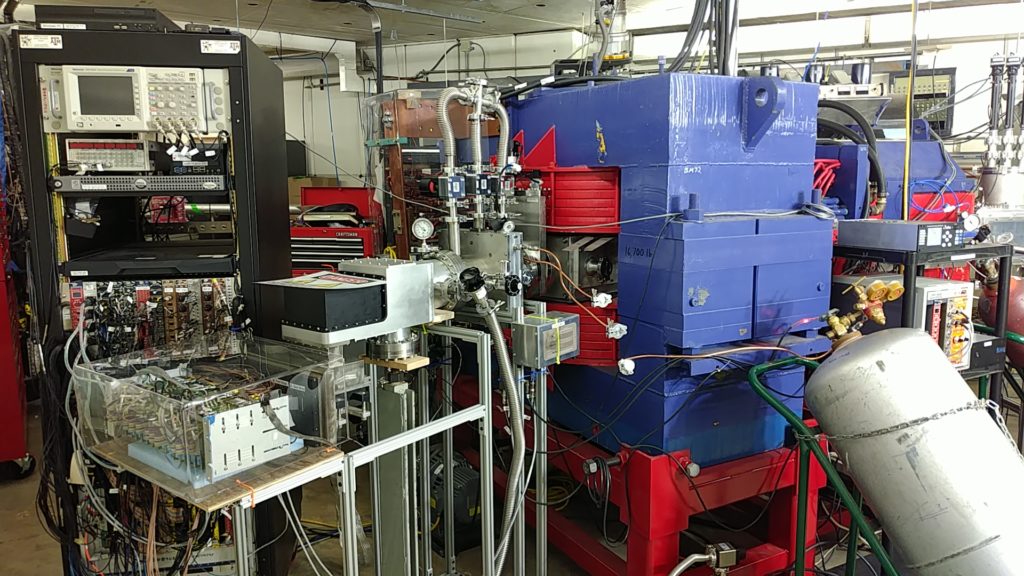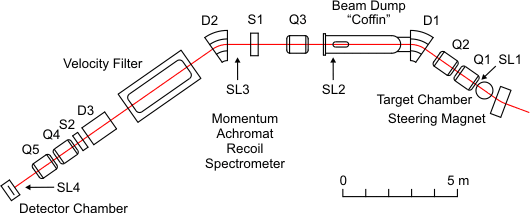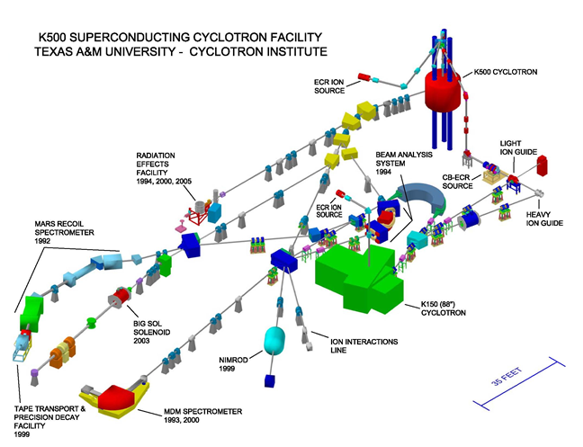Our group’s research is heavily dependent on the availability of the specialized facilities and equipment, and Texas A&M University has the expertise, facilities, and administrative support needed to do this work. The most important facilities and equipment that we use are the Cyclotron Institute, the MARS spectrometer, the SASSYER separator, and our radiochemistry laboratory.
Cyclotron Institute
Texas A&M is the home of one of the few universities in the United States with a cyclotron. In fact, the Cyclotron Institute has two cyclotrons, a superconducting K500 cyclotron that is in routine use, and a normal conducting K150 cyclotron that is being recommissioned as part of an upgrade project. The upgrade will allow two independent experiments to be conducted simultaneously, or the coupling of the two cyclotrons to produce rare isotope beams. A schematic of the facility is shown below.
AGGIE Gas-Filled Separator

We have recently installed the SASSYER separator from Yale University, and renamed it AGGIE. This separator is is gas-filled, and the interaction of ions with helium causes them to undergo a number of charge-changing interactions. After many interactions, the ions will have a narrow charge distribution, and this makes the collection of our nuclear reaction products more efficient. As a result, AGGIE should substantially increase the sensitivity of our experiments.
MARS Spectrometer

We have conducted most of our experiments on the the Momentum Achromat Recoil Spectrometer (MARS). (For more information on MARS click here and here). Intense beams are required to produce heavy elements, but these would easily destroy our ultra-sensitive detection equipment if they were allowed to reach the final focal plane. MARS uses a two-stage separation scheme to reduce the primary beam intensity and eliminate other unwanted reaction products. The first stage spatially separates ions based on their magnetic rigidity, equal to mv/q. The second stage uses a so-called Wien filter to separate ions based on their velocity. The ion of interest in our experiment have the lowest velocities of any particles in the system and are easily separated by the Wien filter. The end of MARS has a modular design that allows us to insert detectors or other equipment for novel chemical studies. The spectrometer is shown below. We have also developed a custom data-acquisition system for these experiments.
Radiochemistry Laboratory
Much of our research in both nuclear forensics and heavy element chemistry is conducted “offline” without the use of cyclotron beams. In collaboration with the Department of Nuclear Engineering, we have developed a radiochemistry lab where we can work with radioactive samples. Our lab has a glovebox dedicated to nuclear forensics, a fume hood for low-level work, a high-purity germanium gamma ray detector, an automated sodium iodide gamma ray detector, and appropriate safety equipment.
